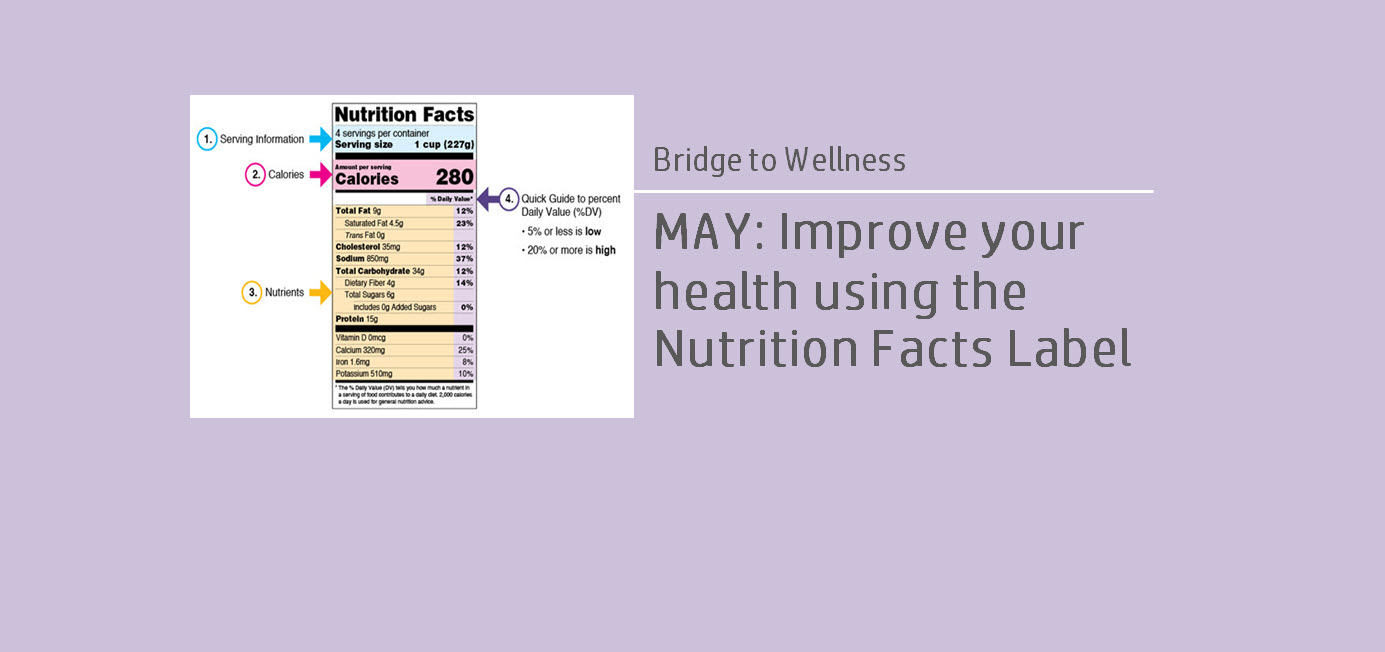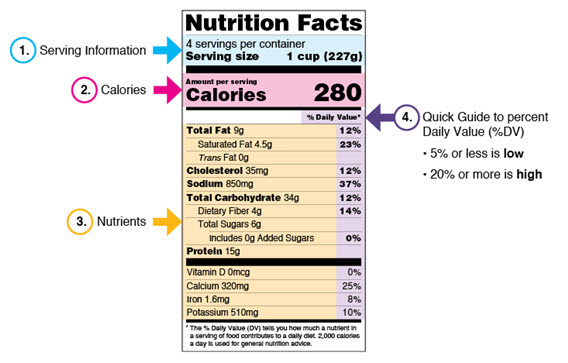
Bridge to Wellness
May: Using Nutrition Facts Labels can help improve your health
by Sophia Speroff, MPH, RD
This brief overview of nutrition food labels may help you use the information more effectively and easily to make quick, informed food decisions for a healthy diet.
What’s changed?
- Calories and fat: Larger print to make it easier to see.
- Serving sizes: Standardized to make it easier to compare similar foods, providing familiar units in cups or pieces reflecting what people are likely to eat/drink, not necessarily the portion they should eat.
- Added sugars: Shows the percent from added sugars including brown sugar, maple sugar, corn sweetener, syrup, honey, malt syrup and molasses.
- Dual columns: If the item contains more than one serving, there may be two columns—one to provide calorie and nutrient information for one serving and another column to show information for the entire package.
- Nutrients required: Vitamin D, potassium, calcium, and iron are required. Vitamins A and C will no longer be required.
Serving information
Look at the number of servings in the package (servings per container) and the serving size. The serving size amount is the amount that people typically eat or drink. All the nutrient amounts shown on the label, including the number of calories, refer to the size of the serving. Pay particular attention to the serving size, especially how many servings are in the food package.
Calories
Calories measure how much energy you get from a serving of food. In the label that accompanies this article, there are 280 calories in one serving. Consuming the entire package—four servings—totals 1,120 calories.
Nutrients
These key nutrients impact your health, including foods you want to get more of and those you may want to limit. Nutrients you want to limit include saturated fat, sodium and added sugars. Eating too much saturated fat and sodium may increase the risk of developing cardiovascular disease and high blood pressure. Total sugars include those naturally present in many nutritious foods and beverages, such as milk and fruit. On the other hand, added sugars include those added during the processing of food, such as sucrose or sugars from syrups and honey.

Upcoming SAWC Events:
- Next Stockbridge Area Wellness Coalition meeting is on Tuesday, May 17, 2022, at 4:30 p.m. in room 108 at the Stockbridge Activity Center. All welcome!
Sources
- Center for Food Safety and Applied Nutrition (n.d.). How to understand and use the nutrition facts label.S. Food and Drug Administration. Retrieved February 9, 2022, from www.fda.gov/food/new-nutrition-facts-label/how-understand-and-use-nutrition-facts-label
- Centers for Disease Control and Prevention. (2019, June 26). Nutrition facts label. Centers for Disease Control and Prevention. Retrieved February 9, 2022, from https://www.cdc.gov/healthyschools/bam/nutrition/nutrition-facts-label.htm
 This column is sponsored by the Stockbridge Area Wellness Coalition (SAWC). Sophia Speroff is a registered Dietitian (RD) of 10 years with her master’s in public health, currently working at St Joseph Mercy Hospital in Chelsea as a community RD. She has an athletic and competitive side, staying active training for triathlons and half marathons. In her free time, Sophia likes to hike, folk dance and garden.
This column is sponsored by the Stockbridge Area Wellness Coalition (SAWC). Sophia Speroff is a registered Dietitian (RD) of 10 years with her master’s in public health, currently working at St Joseph Mercy Hospital in Chelsea as a community RD. She has an athletic and competitive side, staying active training for triathlons and half marathons. In her free time, Sophia likes to hike, folk dance and garden.



